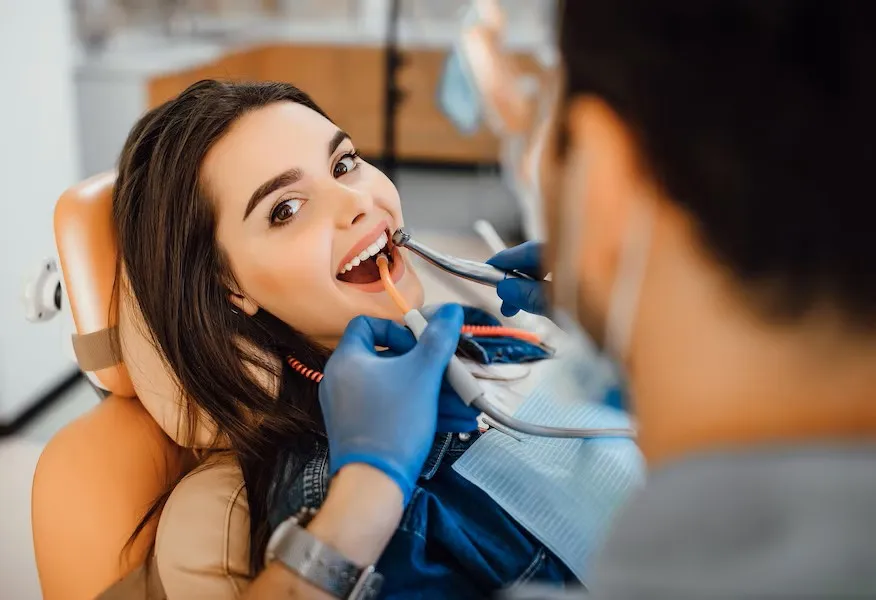Dentistry exists in a far different state in modern times compared to how things were a long time ago. The modern dentist has access to a large variety of developments in tools and technology that they use to deliver accurate, comfortable, and efficient care. No part of the instrument is unimportant, whether it is used in diagnostics, restorations, or extractions etc. Each of them is crucial to ensure a positive outcome. Among these, carbide burs stand out as one of the most frequently used and indispensable tools in clinical dentistry.
The Role of Carbide Burs in Modern Dentistry
Carbide burs are rotary cutting instruments made from tungsten carbide, a material known for its extreme hardness and durability. These instruments are applied in many procedures that include enlisting cavities, shaping of crowns, and the removal of old fillings. The fact that they can retain a sharp edge throughout a long period of use makes them suitable to cut through enamel and dentin precisely and causing a little amount of discomfort to the patient.
Dentists prefer carbide burs over traditional steel burs due to their superior performance, efficiency, and smoother cutting capabilities. Whether working on natural teeth or restorative materials, carbide burs allow for quick and accurate shaping, improving both clinical outcomes and patient satisfaction.
Diagnostic Tools: A Precondition to the Proper Treatment
It is very necessary to make a good diagnosis before any treatment begins. New technologies such as digital X-ray, intraoral cameras, and three-dimensional scanners enable dentists to see the complete picture of the oral health of a patient. The advantages of these diagnostic tools are that they enable high levels of image resolution to occur in real-time, which makes the identification of cavities, evaluation of bone formation simpler, and enables plans to be made accurately.
The sphere of implant dentistry is also changing fast with 3D imaging that allows detailed planning of implant location and better results of surgical procedures.
Restorative Tools: Precision and Patient Comfort
Accuracy is the key in the restorative process. Dentists are employing the combination of a handpiece, bur, as well as the composite tool to extract decay and build up teeth to acquire crowns, fillings, and veneers. As mentioned earlier, carbide burs play a central role here by allowing for detailed, conservative preparations that preserve healthy tooth structure.
Strong aesthetic materials and adhesive systems, curing lights, and composite guns allow restoring teeth in a minimally invasive way as well.
Surgical Equipment: Optimised precision with Oral operations
Surgeries such as extractions, implants, and periodontal procedures increase the need for tools that perform well to make the incision clean and the recovery fast. Piezoelectric tools, advanced surgical handpieces, and bone grafting kits make dentists and oral surgeons work with a high level of precision.
Single-use instruments and a sterile environment also contribute significantly to enhancing surgical safety and the prevention of infection.
Hygiene and Sterilization: Patients and Provider Protection
Cleanliness and sterility are essential in a dental environment. The autoclaving procedure, ultrasonic cleaners, and disposable barriers are present to make sure that tools are correctly sterilized between patients. Under the growing interest in infection prevention, a growing number of clinics have resorted to single-use varieties of implements such as suction tips, mirrors, and even burs to be on the safe side.
Conclusion
The instruments used in modern dental work have revolutionized the practice of delivering care as the procedures performed are now speedy, more accurate, and patient-friendly. Whether we talk about high-performance diagnostics or ultra-sophisticated surgical devices, each of them has its purpose of making dental care better. Among them, carbide burs remain a cornerstone of restorative dentistry, offering unmatched durability and accuracy. With the further development of technology at hand, dental practitioners are going to possess even more potent tools in the future, resulting in even healthier smiles and more pleasant experiences for patients.
- FREHF – The Revolutionary Future Of Human-Centered Technology!
- Adsy.Pw/Hb3 – Boost Your SEO And Drive More Traffic!
- Fitness Based Vacations By Timeshealthmage.com!
- TimesHealthMag Tips For Improving Sleep Quality – Expert Advice For Better Rest!
- How TimesHealthMage Helps Improve Your Lifestyle Habits!


Leave a Reply